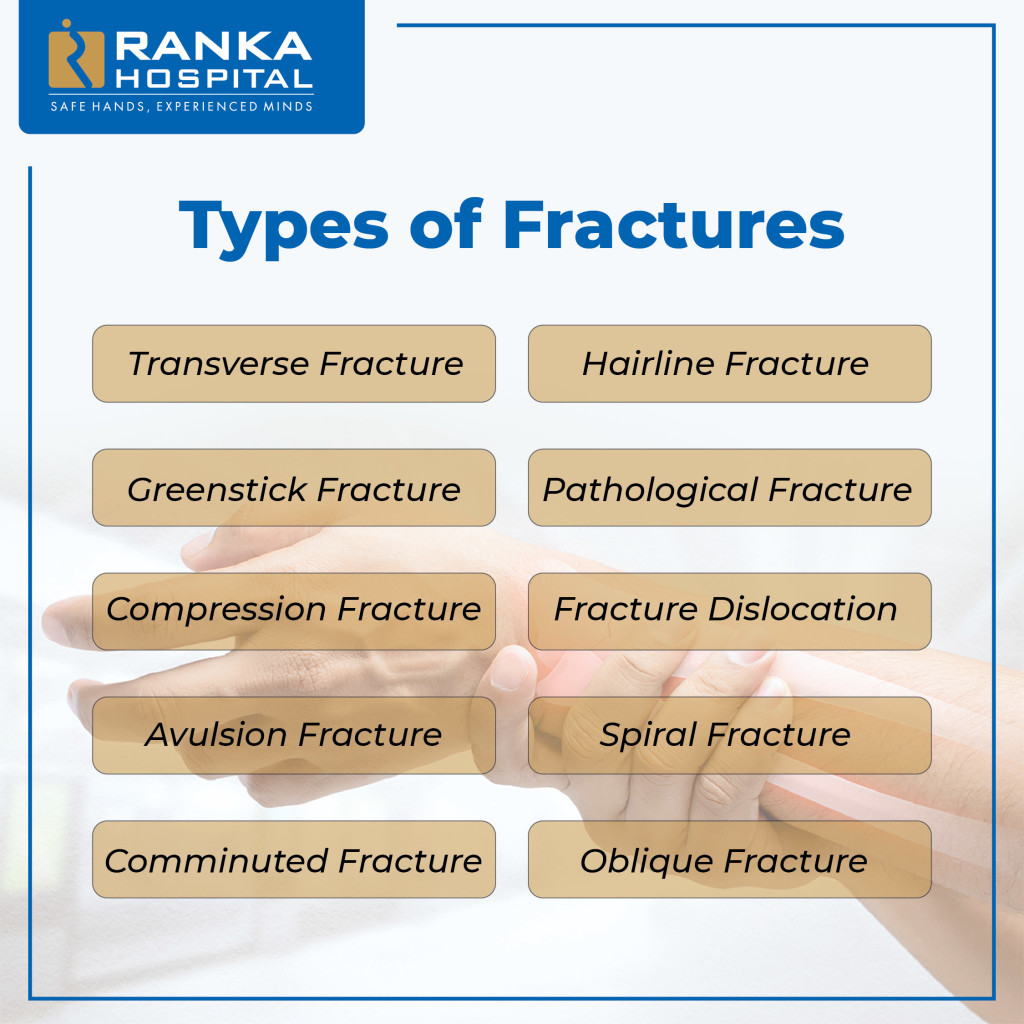Treatment of Broken Bones / Fractures at the Hospital:
The treatment includes restricting the movements of the bone for healing with a plaster cast, or surgically inserting metal rods or plates to hold the bones together. Some complicated bone fractures may need surgery. Immobilization of the broken bone with a cast, splint, or brace heals most broken bones.
Our team of specialists at the Ranka Orthopedic Hospital is dedicated to providing comprehensive care for a variety of Orthopedic problems. From arthritis injuries, to congenital conditions, to the most complex reconstruction, our Orthopedic Doctors approach each case individually, with a specific plan designed to maximize the restoration of both form and function. Depending on the types of Orthopedic conditions our patients face, our Physicians will help determine the best therapies or procedures to maximize functionality and normal appearances.
When you hear the term ‘fracture’, it is easy to assume that it is one of the most straightforward medical conditions you could have. The bone is broken and therefore in medical terms, fractured. However, it is not so black and white. How much damage the bone has suffered, what kind of damage and where the damage has occurred, are just a few parameters that are considered while differentiating between fractures. We at Ranka Hospital take you through a few types of fractures that exist.

At the very basic, fractures can be classified into:
1. Open or Closed: An open fracture is one in which the bone tears through the skin, exposing itself. The bone and tissue will be visible with the naked eye. A closed fracture on the other hand does not tear through the skin. Closed fractures are also known as simple fractures, while open fractures are alternatively called complex fractures.
2. Complete or Incomplete: When a bone is only cracked and not completely broken, it is called an incomplete fracture. And a complete fracture is one where the bone completely snaps.
They can be further subdivided into a number of kinds. We take a look at a few of these.
1. Transverse Fracture: A transverse fracture is one that is perpendicular to the axis of the bone. i.e. – It is a straight break across the bone.
2. Oblique Fracture: Here, the bone breaks at an angle (usually diagonally). This most commonly occurs in the longer bones of the body. An oblique fracture could be caused due to an external force being applied at an angle, or even due to a sudden twisting motion.
3. Comminuted Fracture: When the bone breaks into more than two parts, it is called a comminuted fracture. This is a very serious type of fracture and usually occurs due to high-impact trauma such as a car accident. This is a complete fracture.
4. Hairline Fracture: A hairline fracture occurs when small cracks or bruises gradually develop in the bone. These most commonly occur in sports people due to repetitive motions, though they can occur for other reasons as well. This kind of fracture is incomplete.
5. Greenstick Fracture: Similar to trying to break a green branch of a tree, a greenstick fracture occurs when the bone bends and cracks slightly. This kind of fracture occurs in children as their bones are flexible and soft. This is an example of an incomplete fracture.
6. Pathological Fracture: A fracture that occurs due to a disease that has weakened the bones is called a pathological fracture. Infection and osteoporosis are examples of diseases that cause pathological fractures.
7. Compression Fracture: A fracture that occurs when a bone loses its density is known as a compression fracture. Commonly, it occurs in the spine due to osteoporosis. In a sense, a compression fracture is a type of pathological fracture.
8. Fracture Dislocation: This is when a fracture and dislocation occur at the same time. i.e.- The joint dislocates and one of the bones fracture.
9. Avulsion Fracture: An avulsion fracture occurs where the bone is connected to a tendon or ligament. Here, the tendon or ligament pulls away a piece of bone. This kind of fracture can occur when there is a sudden change of direction in movement, such as that athlete’s experience.
10. Spiral Fracture: This fracture occurs because of a twisting or rotational force. This usually occurs due to a great external force. Sports accidents, motor accidents and physical violence are common reasons for spiral fractures.
Some symptoms of fractures include pain, swelling, bruising and inability to put weight on the injured area. In some cases this may be accompanied with nausea and dizziness. If you suspect a fracture, don’t try and diagnose it yourself or hope that it will magically disappear. Even though bones are naturally designed to heal on their own (once they are aligned again), the aim of treating a fracture is to ensure that after the healing process, the bone continues to function to its maximum potential.
As you can see, it’s simply not enough to describe a fracture as a ‘break’ in the bone. There is much more that goes into defining and diagnosing a fracture. Our orthopedic specialists at Ranka Hospital can help you diagnose and treat your fracture correctly.
